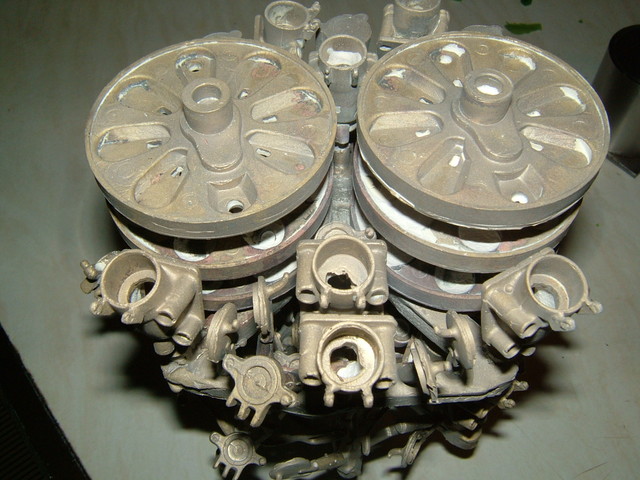Jack3M
Well-Known Member
- Joined
- Jul 11, 2017
- Messages
- 294
- Reaction score
- 140
I need much more knowledge about this before I start purchasing the 'lost' products and what I need to purchase. Research on this site reveals some content, not enough. and hopefully this can be beneficial to others as the thread progresses.
My only attempt was last year and I used plaster of paris, let it cure, and fired it in my forge. Well a few spots survived, which was enough to get the idea of just how good the castings would be. But plaster of paris is not the product to use as it just crumbled to almost nothing during the firing.
Which investment is suitable for this and will survive the firing?
How do you assure all the ash from the burned out PLA is removed from the mold?
Do you vent the mold?
Does the mold need anything to keep it from breaking before you are ready to remove the casting?
What do I need to ask that I don't know? My experience is limited to sand casting with aluminum, brass, and bronze.
My only attempt was last year and I used plaster of paris, let it cure, and fired it in my forge. Well a few spots survived, which was enough to get the idea of just how good the castings would be. But plaster of paris is not the product to use as it just crumbled to almost nothing during the firing.
Which investment is suitable for this and will survive the firing?
How do you assure all the ash from the burned out PLA is removed from the mold?
Do you vent the mold?
Does the mold need anything to keep it from breaking before you are ready to remove the casting?
What do I need to ask that I don't know? My experience is limited to sand casting with aluminum, brass, and bronze.




































![MeshMagic 3D Free 3D Modeling Software [Download]](https://m.media-amazon.com/images/I/B1U+p8ewjGS._SL500_.png)



![DreamPlan Home Design and Landscaping Software Free for Windows [PC Download]](https://m.media-amazon.com/images/I/51kvZH2dVLL._SL500_.jpg)






























